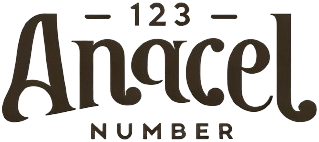A well-equipped workshop is a productive workshop, but neglecting safety can quickly turn that productivity into disaster. Accidents and injuries can not only cause personal harm but also disrupt workflows and damage valuable equipment.
Here’s a guide to equipping your workshop for safety, ensuring a productive and hazard-free environment.
Tools and Practices to Equip Your Workshop for Safety
This document provides a guide on how to equip your workshop with safety tools and practices in order to ensure worker safety:
Prioritize Personal Protective Equipment (PPE):
The first line of defense in any workshop is proper personal protective equipment (PPE). This includes items like safety glasses, gloves, respirators, and hearing protection. Invest in high-quality PPE that fits you comfortably and is appropriate for the tasks you’ll be undertaking.
Safety glasses shield your eyes from flying debris or sparks, while gloves protect your hands from cuts, burns, and abrasives. Respirators are essential when working with dust, fumes, or chemicals, and hearing protection safeguards your ears from loud machinery noise.
Fire Safety Essentials:
Being prepared for a fire is crucial in any workshop environment. Keep a readily accessible fire extinguisher of the appropriate type for the potential fires in your workspace. Fire extinguisher sales professionals can advise you on the best extinguisher type based on the materials and processes used in your workshop.
For example, Class A extinguishers are suitable for ordinary combustibles like wood and paper, while Class B extinguishers are designed for flammable liquids. Remember, fire extinguishers are for small fires; in case of a larger blaze, evacuate immediately and call the fire department.
Guarding Moving Parts and Machinery:
Many workshop tools and machinery have moving parts that pose potential hazards. Ensure all guards and shields are properly installed and functioning on equipment like saws, drill presses, and grinders.
Never attempt to operate machinery with missing or malfunctioning guards. Similarly, keep loose clothing and jewelry away from moving parts to prevent entanglement.
Maintaining a Clean and Organized Workspace:
A cluttered workshop is an accident waiting to happen. Regularly clean up scrap materials, sawdust, and other debris to prevent them from becoming slip or trip hazards.
Store tools and equipment in designated locations when not in use to avoid clutter and ensure they’re readily available when needed. Proper organization also minimizes the risk of tripping over cords or misplaced tools.
Understanding Products and Safe Operation:
If your workshop utilizes specialized equipment like a IMS track blender, familiarize yourself with their safe operation procedures. It’s often used in paint mixing or other industrial applications and require specific safety protocols.
Consult the manufacturer’s instructions and ensure all safety features are functioning correctly before starting the machine. Never operate machinery you’re not fully trained on, and always prioritize safety measures.
Conclusion
By implementing these practices and utilizing the appropriate safety equipment, you can create a workshop environment that fosters productivity and minimizes the risk of accidents. Remember, safety should never be an afterthought; by prioritizing it, you can ensure a productive and enjoyable workshop experience.






